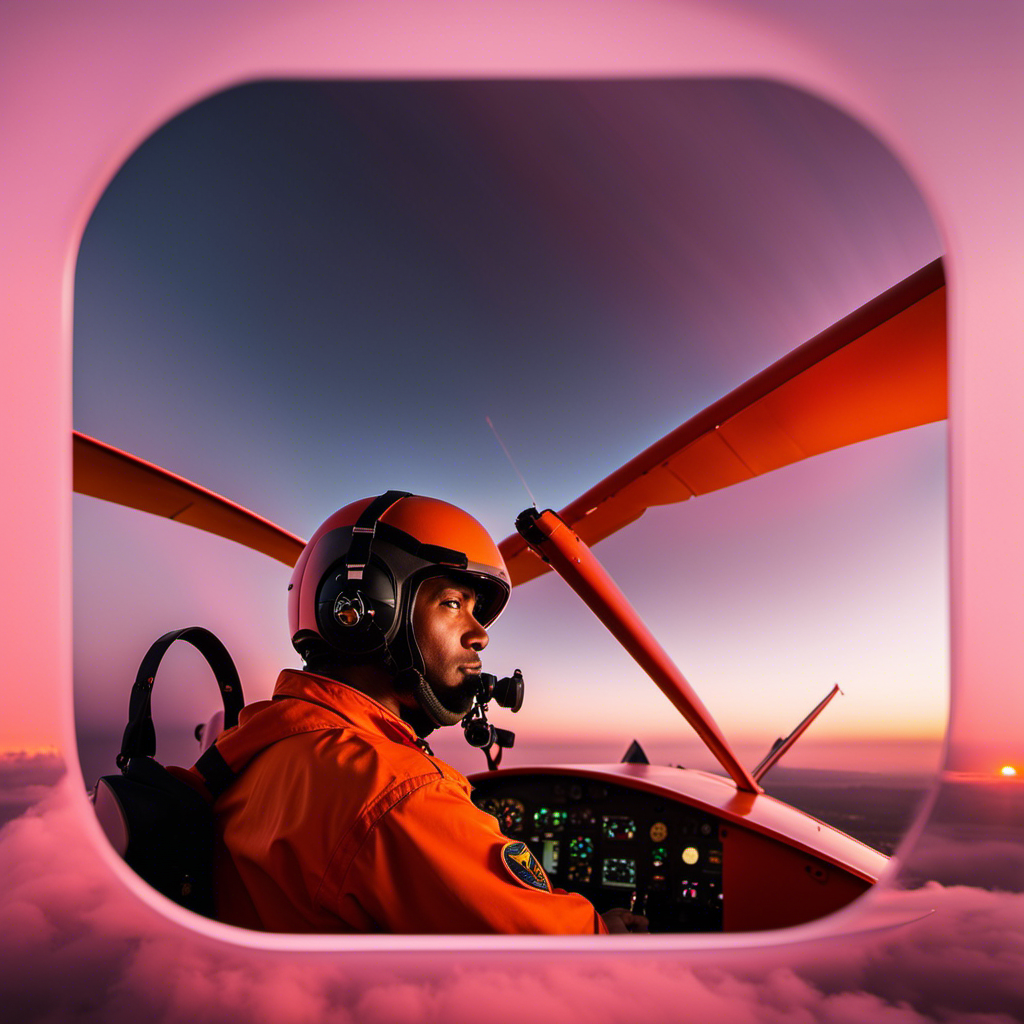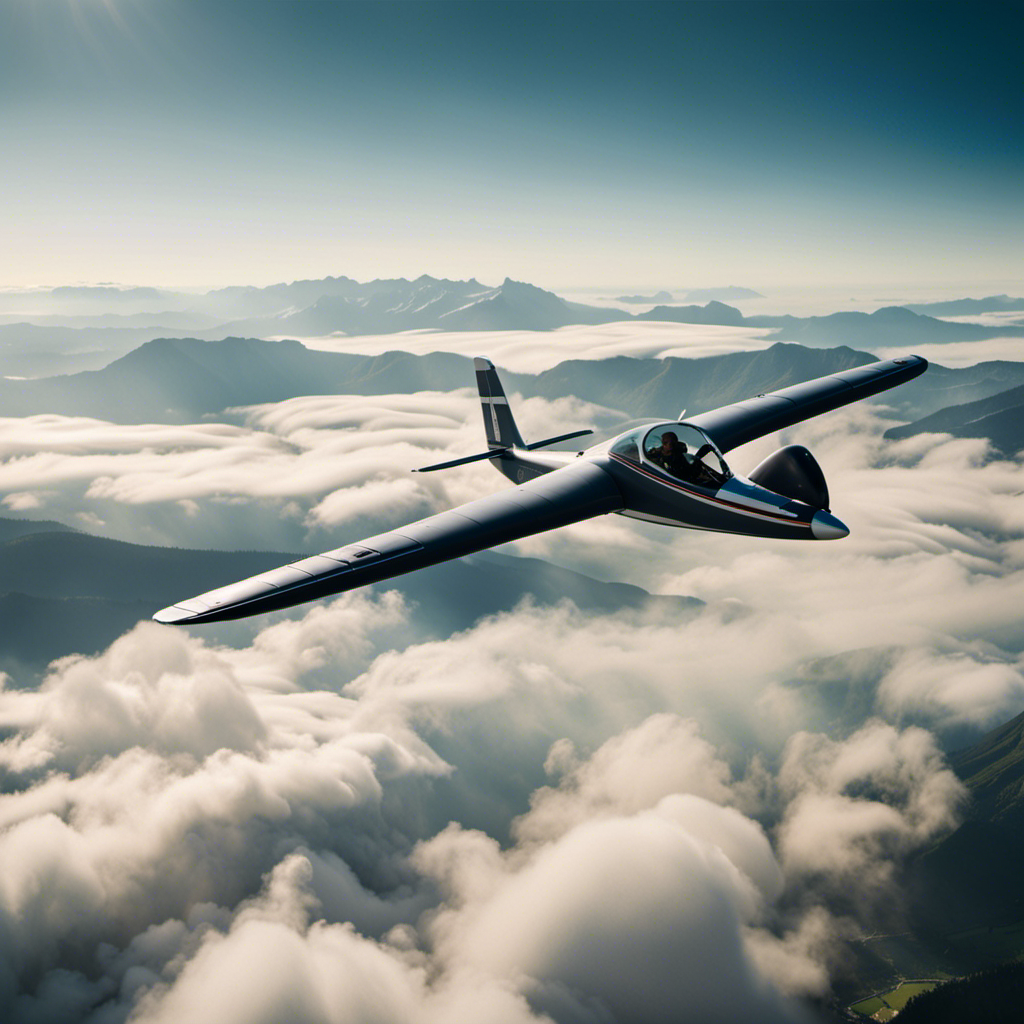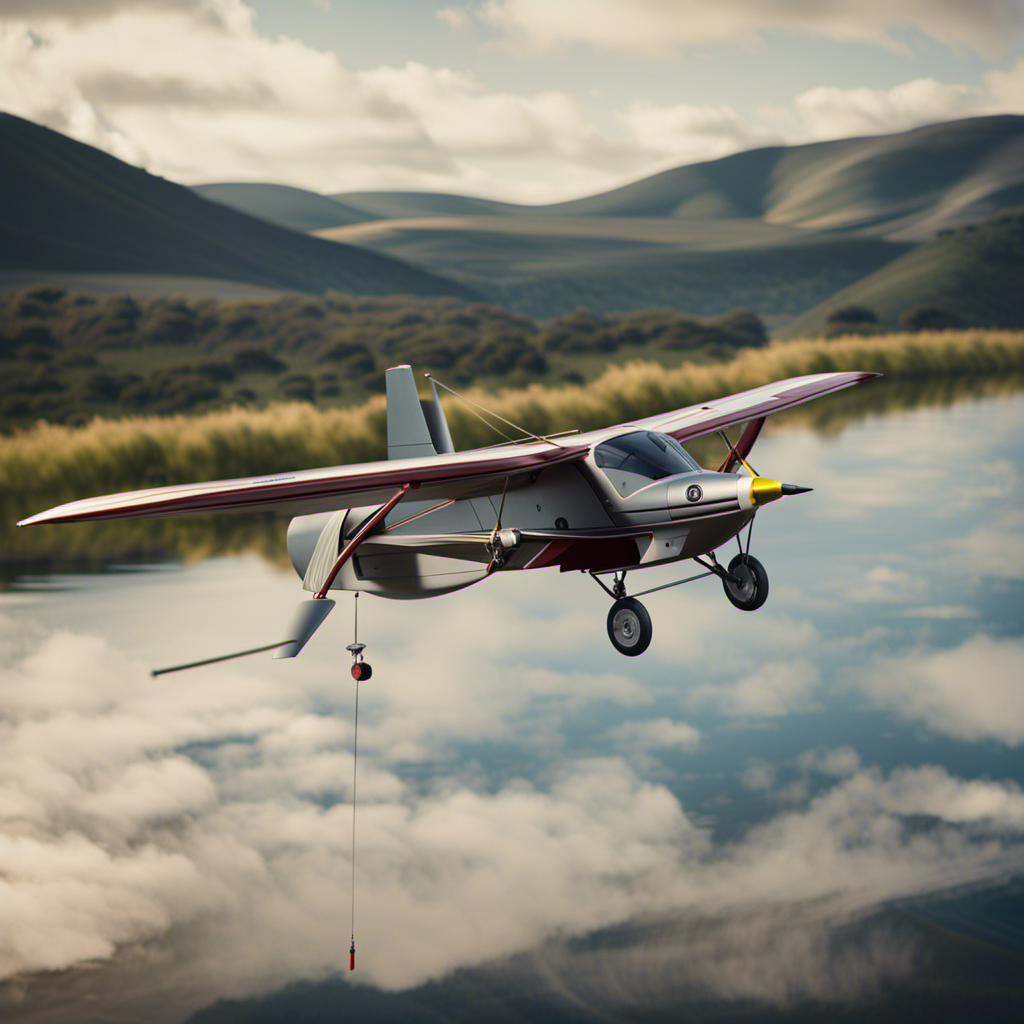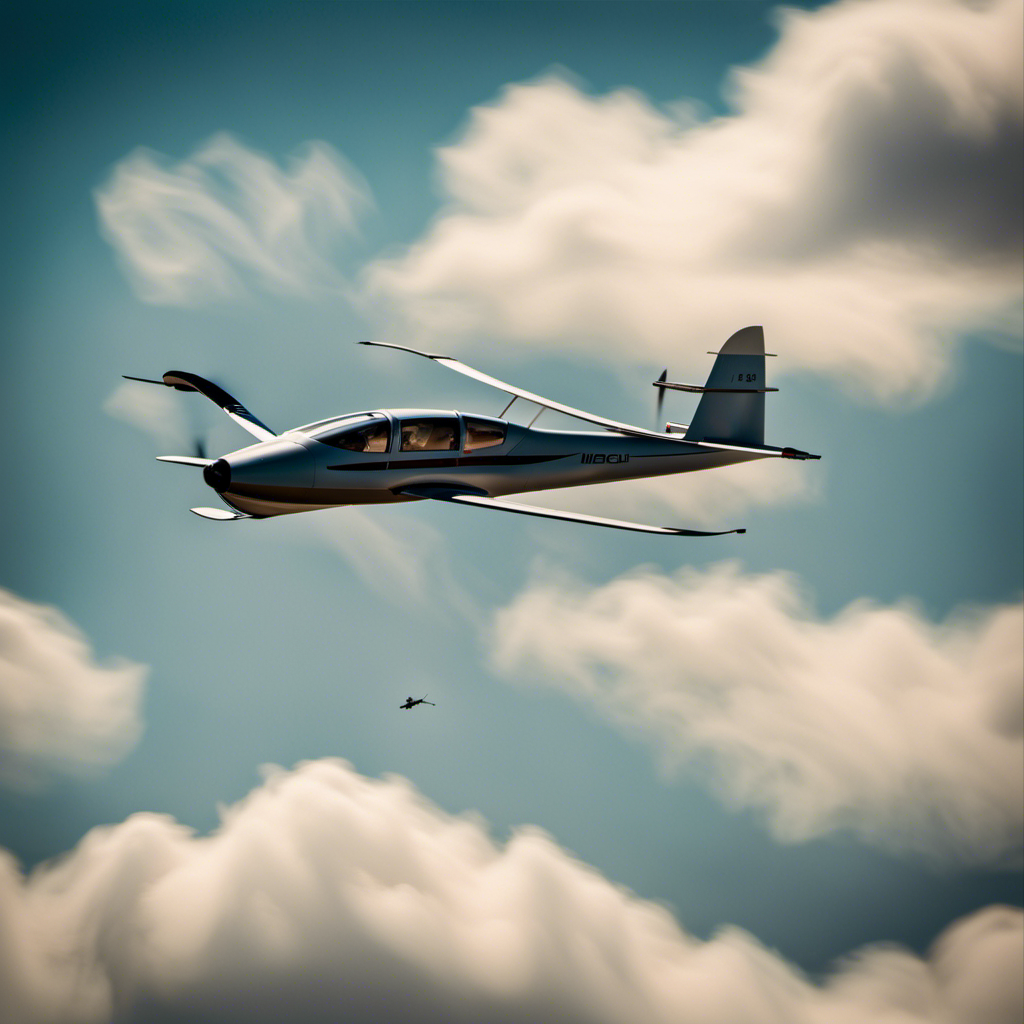Did you know that becoming a glider tow pilot can lead to a variety of thrilling and unique aviation experiences? Holding a private pilot license and completing the necessary training enables you to take on the exciting role of launching gliders into the sky.
In this article, I’ll guide you through the step-by-step process of becoming a glider tow pilot. From understanding the requirements and regulations to gaining flight experience and passing the glider tow pilot exam, you’ll learn everything you need to know to embark on this adventure.
So, let’s get started!
Key Takeaways
- Connect with experienced pilots through professional associations and networks, and learn from their expertise.
- Deepen understanding of glider towing techniques by reading aviation publications, attending workshops, and taking online courses.
- Practice different scenarios to improve decision-making skills, including participating in simulated training exercises and analyzing past incidents.
- Stay current on regulations by reviewing FAA regulations, attending regulatory workshops, and following industry best practices.
Understand the Requirements and Regulations
To become a glider tow pilot, you’ll need to understand the requirements and regulations.
The first step is to ensure that you hold a valid private pilot license. This means that you must meet the minimum flight experience requirements, pass a written and practical exam, and undergo a medical examination.
In addition to the private pilot license, you’ll need to obtain a glider rating. This involves completing a specific number of flight hours in a glider, as well as passing a written and practical exam.
It’s important to familiarize yourself with the regulations set by the Federal Aviation Administration (FAA) regarding glider towing operations. These regulations cover areas such as aircraft equipment, pilot qualifications, and operational procedures.
Obtain a Private Pilot License
Obtaining a Private Pilot License involves completing the required flight training and passing the necessary exams. To successfully obtain your private pilot license and gain the necessary flight experience, follow these steps:
-
Enroll in a reputable flight school: Choose a flight school that offers comprehensive training programs and experienced instructors.
-
Ground training: Learn the theoretical aspects of flying, including aviation regulations, aerodynamics, and navigation.
-
Flight training: Take to the skies and apply what you’ve learned in practical flight lessons. Master basic maneuvers, emergency procedures, and navigation techniques.
-
Pass the exams: Once you have completed your flight training, you will need to pass both a written knowledge test and a practical flight test to obtain your private pilot license.
Gain Flight Experience
Gaining flight experience is crucial for furthering your skills as a pilot.
As you embark on your journey to become a glider tow pilot, it is essential to prioritize flight training and practical experience. By enrolling in a reputable flight school, you will receive comprehensive instruction on the fundamentals of aviation, including navigation, aerodynamics, and safety procedures.
It is during these training sessions that you will gain valuable knowledge and hands-on experience in the cockpit. Additionally, take advantage of any opportunities to fly as a co-pilot or participate in flight exercises to further enhance your skills. This practical experience will not only build your confidence but also provide a deeper understanding of the intricacies of glider towing.
With a solid foundation in flight experience, you are now ready to complete glider tow pilot training, where you will specialize in the unique techniques and procedures required for this specific role.
Complete Glider Tow Pilot Training
Once you’ve completed your flight training, it’s time to focus on the specialized training required for glider tow piloting.
Glider tow pilot training is essential to ensure you have the necessary skills and knowledge to safely tow gliders. Practical experience is a key component of this training.
You will learn how to properly attach and release the tow rope, maintain a steady climb, and communicate effectively with the glider pilot. Additionally, you will gain a deep understanding of the aerodynamics and handling characteristics of the tow aircraft and glider.
This training will prepare you for the challenges and responsibilities of being a glider tow pilot. With the right training and practical experience, you will be well-equipped to pass the glider tow pilot exam and begin your career as a tow pilot.
Pass the Glider Tow Pilot Exam
To successfully pass the glider tow pilot exam, you must demonstrate your knowledge of aerodynamics, communication skills, and proficiency in handling the tow aircraft.
The written exam will test your understanding of glider towing procedures, airspace regulations, and emergency protocols. Study the relevant textbooks and take practice exams to ensure you are well-prepared.
Additionally, the practical exam will assess your ability to safely execute glider tow operations. You will be evaluated on your communication with the glider pilot, your ability to maintain proper tension on the towline, and your skill in performing takeoffs and landings. Practice these maneuvers extensively to build confidence and proficiency.
Once you have successfully passed both the written and practical exams, you can move on to building your flight hours.
Build Your Flight Hours
You can start building your flight hours by taking advantage of opportunities to fly as often as possible. Building experience is crucial in flight training, and the more hours you log, the better pilot you become. Here are a few ways to build your flight hours:
- Look for local flight schools or clubs that offer rental or training opportunities.
- Take advantage of any spare time you have to fly solo or with an instructor.
- Consider joining a flying organization or group that offers regular flying events.
By actively seeking out opportunities to fly, you will not only gain valuable experience but also develop your skills as a pilot. As you continue to build your flight hours, you will become more confident and proficient in handling different flight scenarios.
This will set a solid foundation as you progress towards becoming a glider tow pilot. So, let’s explore the next step: join a glider club or organization.
Join a Glider Club or Organization
Now that you’ve built up your flight hours, it’s time to take the next step on your journey to becoming a glider tow pilot. One of the best ways to immerse yourself in the glider community and gain invaluable experience is by joining a glider club or organization.
Not only will you have access to a network of experienced pilots who can mentor and guide you, but you’ll also have the opportunity to fly a variety of different gliders and learn from others’ experiences.
Glider clubs often offer training programs specifically tailored for aspiring tow pilots, along with resources such as workshops, seminars, and online forums where you can learn from experts in the field.
Continue Your Education and Training
As you progress in your journey, it’s important to keep expanding your knowledge and skills through ongoing education and training. Continuing education and advanced training are essential for becoming a skilled glider tow pilot.
Here are five key ways to continue your education and training:
- Take advanced flight courses to enhance your flying skills and knowledge.
- Attend workshops and seminars to stay updated on the latest techniques and technologies.
- Join professional associations and networks to connect with experienced pilots and learn from their expertise.
- Read aviation publications and research papers to deepen your understanding of glider towing techniques.
- Participate in simulated training exercises to practice different scenarios and improve your decision-making skills.
Stay Current and Up-to-Date on Regulations
Staying current and up-to-date on regulations is crucial for maintaining a strong foundation as a skilled glider tow pilot. As a pilot, it is my responsibility to stay informed about any changes or updates in the regulations that govern my profession. This ensures that I am always operating within the legal boundaries and maintaining the highest level of safety.
To stay current, I regularly review the Federal Aviation Administration (FAA) regulations and guidelines specific to glider towing operations. I also participate in training programs and attend seminars to stay abreast of any new developments.
Embrace the Adventure and Enjoy the Experience
To fully embrace the adventure and truly enjoy the experience, you should immerse yourself in the exhilarating world of glider flying. Here are three steps to help you embrace the challenges and develop new skills:
-
Find a reputable glider flight school: Look for a school that has experienced instructors and a strong safety record. They’ll provide you with the knowledge and skills you need to navigate the skies with confidence.
-
Practice patience and perseverance: Glider flying requires patience and the ability to adapt to changing conditions. Embrace the challenges that come your way, whether it’s dealing with unpredictable weather or mastering new flying techniques. Remember, every flight is an opportunity to learn and improve.
-
Join a glider club or community: Surround yourself with fellow glider pilots who share your passion. Engaging with others who are also on this exciting journey will provide you with valuable insights, support, and opportunities for growth.
Frequently Asked Questions
How long does it typically take to obtain a Private Pilot License?
Obtaining a private pilot license requires time and commitment, as well as cost considerations. It typically takes several months to a year to complete the necessary training and pass the required exams.
Are there any specific medical requirements to become a glider tow pilot?
To become a glider tow pilot, you must meet specific medical requirements. Certain health conditions, such as uncontrolled epilepsy or a history of substance abuse, may disqualify you from pursuing this role.
Can I become a glider tow pilot if I have a previous criminal record?
Having a criminal record may affect your eligibility to become a glider tow pilot. Background checks are typically conducted for aviation roles, and certain offenses may disqualify you from obtaining the necessary certifications and clearances.
Are there any age restrictions for becoming a glider tow pilot?
There are age restrictions for becoming a glider tow pilot. The training process requires individuals to meet certain age requirements, which may vary depending on the country or organization providing the training.
Is it possible to become a glider tow pilot if I have a fear of heights?
Yes, it is possible to become a glider tow pilot even if you have a fear of heights. Overcoming fear is a personal journey, but if it’s too challenging, there are alternative roles within aviation that you can explore.
Conclusion
So there you have it, folks! Becoming a glider tow pilot may seem like a daunting task, but with dedication and determination, it is definitely within reach. Remember, the sky’s the limit!
With each step, you’ll be soaring higher and higher, embracing the adventure and enjoying the experience of being a glider tow pilot.
So buckle up, get ready for an exhilarating ride, and prepare to become part of an elite group of pilots who can make the clouds their playground.
Happy flying!
With a heart that soars as high as the skies, Aria, affectionately known as “Skylark,” is the driving force behind Soaring Skyways. Her journey into the gliding world began as a young dreamer gazing up at the soaring birds, yearning to experience the weightlessness and freedom they embodied. With years of experience both in the cockpit and behind the scenes, Aria’s commitment to the gliding community is unwavering.










